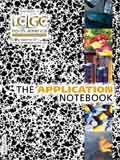Combining Hardware, Software, and Chromatography to Improve the GC/MS Analysis of Semi-Volatile Compounds
Analysis of semi-volatile organic compounds by GC–MS according to well-established methodologies requires integration of a complete system of GC–MS instrumentation and software for data interpretation, analysis, and reporting. While the overall process of analyzing these target compounds is a mature technique, there are continuous innovations that allow laboratories to meet lower detection limits and analyze new compounds to comply with changing regulations, with higher throughput and improved quality.
Analysis of semi-volatile organic compounds by GC–MS according to well-established methodologies requires integration of a complete system of GC–MS instrumentation and software for data interpretation, analysis, and reporting. While the overall process of analyzing these target compounds is a mature technique, there are continuous innovations that allow laboratories to meet lower detection limits and analyze new compounds to comply with changing regulations, with higher throughput and improved quality.
Experimental Conditions
For this experiment, a standard GC–MS method for the analysis was developed according to published quality control and method guidelines (1). After establishing a baseline of performance according to these guidelines, improvements to the method were tested by combining changes to the chromatography, leveraging of the performance capabilities of the hardware, and applying a software package developed around routine GC–MS workflows. By combining these techniques, laboratories can increase the number of samples that can be analyzed at lower detection limits.
A Thermo Scientific ISQ GC–MS system was operated at a scan speed of 4,650 u/s (0.1 s/scan) over a mass range of m/z 35 to 500 (Figure 1). The Thermo Scientific AS 3000 II autosampler was used to deliver 1 µL of sample for analysis. The Thermo Scientific TRACE GC Ultra gas chromatograph was operated in the split mode to eliminate a significant portion of the matrix.

Figure 1: Gaussian peak shapes for pyridine and N-nitrosodimethylamine (NDMA) in the split mode of injection.
Results
Many methodologies around the world accept the use of splitless injection with an analysis time of 30 min for a long list of active compounds. A split injection can be used if the sensitivity of the mass spectrometer is sufficient. A split injection offers several advantages, including lower detector and column maintenance, better peak shapes for volatile compounds, and increased working range with low film thicknesses which reduces column bleed rates. This method developed operates at a column flow rate of 3 mL/min and a split flow of 60 mL/min.
Using faster scan rates and a rapid oven temperature program resulted in shortened analysis time of 20 min and better chromatographic separation. In the analysis of waste samples, extended working ranges mean fewer dilutions and lower detection limits. A mass spectrometer with sufficient analytical linearity is needed to generate results from a single injection of the sample, avoiding the need to dilute and re-analyze.
When good precision is observed at lower concentrations, replicates can be made at this level that result in lower method detection limits (MDL) than are achieved with a calibration range at high levels. Eight replicate runs were made at 0.5 ng/µL in methylene chloride with the internal standards and surrogates spiked at 40 ng/µL for the determination of the instrument detection limit (IDL).
Conclusions
After establishing a baseline of performance according to the guidelines in US EPA Method 8270D, improvements to the method were made in chromatography, taking advantage of the performance capabilities of the hardware, and applying a software package developed around routine GC–MS workflows. By combining these techniques, an average IDL of 0.082 ng/µL and an extended working range from 0.5 to 200 ng/µL was established. The improvements resulted in shorter run times and increases in overall throughput for sample analysis with less time spent in data review due to the introduction of an intelligent Active View feature in the Thermo Scientific EnviroLab Forms reporting software.
Reference
(1) EPA Method 8270D "Semi-volatile Organic Compounds by Gas Chromatography/Mass Spectrometry (GC/MS)," SW-846 Rev 4, February 2007.
Thermo Fisher Scientific
2215 Grand Avenue Parkway, Austin, TX
tel. (800) 532-4752, fax (561) 688-8731
Website: www.thermoscientific.com.

Separation of Ultra-Short and Long Chain PFAS Compounds Using a Positive Charge Surface Column
December 11th 2024A separation of ultra-short and long chain PFAS (C1-C18) is performed on a HALO®PCS Phenyl-Hexyl column along with a HALO®PFAS Delay column which demonstrates excellent retention for both hydrophilic and hydrophobic analytes.

.png&w=3840&q=75)

.png&w=3840&q=75)



.png&w=3840&q=75)



.png&w=3840&q=75)














